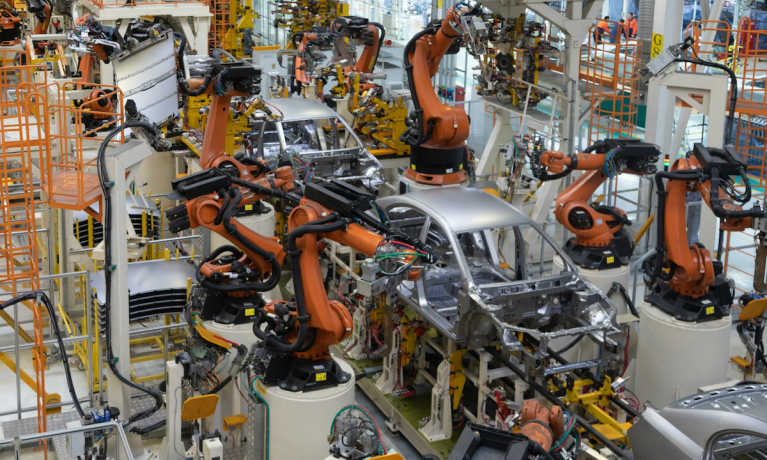However, with the integration of artificial intelligence (AI) tools, Internet of Things (IoT) devices and cloud solutions, the manufacturing sector is undergoing a profound shift toward digital transformation.
Take automobile manufacturing, for instance. Piaggio Fast Forward (PFF), the Boston-based subsidiary of Italian motor vehicle manufacturer Piaggio, recently unveiled ‘kilo,’ an AI-driven factory robot.
Equipped with smart following technology, the hands-free robotic flatbed has a load capacity of up to 130kg. It is possesses sensors and 4D radar imaging that enable it to autonomously follow operators and navigate over 100 predefined routes.
This not only streamlines workflows but also significantly reduces the risk of workplace injuries, marking a significant advancement in safety and efficiency within manufacturing environments.
“Our robotics technology is augmenting workforces around the world; kilo offers customisable options with the ability to utilize state-of-the-art software tools to manage the human-robot relationship,” Piaggio Fast Forward CEO Greg Lynn said in a March 12 press release.
Advertisement: Scroll to Continue
“From manufacturing to any industry that relies on the repetitive movement of goods across campuses and production facilities, PFF’s autonomous technology allows our robots to safely move with and around workers in complex environments, streamlining workflows and increasing productivity,” Lynn added.
Read more: Carmakers Rely on Robotics Amid Wave of Automation
Piaggio joins a growing trend in the vehicle manufacturing sector, where companies are exploring the integration of AI and robotics to streamline their factories.
Earlier this year, Figure, a California-based company developing autonomous humanoid robots, announced a collaboration with BMW to deploy general purpose robots in automotive manufacturing environments.
“Single-purpose robotics have saturated the commercial market for decades, but the potential of general purpose robotics is completely untapped. Figure’s robots will enable companies to increase productivity, reduce costs, and create a safer and more consistent environment,” Figure’s founder and CEO Brett Adcock said in a Jan. 18 press release.
Related: Figure AI to Raise $675 Million for Human-Like Robots
In 2021, Tesla introduced its humanoid robot concept, Optimus. Since then, the company has been enhancing its prototypes for general-purpose humanoid robots, reflecting an industry-wide trend of leveraging advanced technology to streamline factory operations.
Overall, the adoption of AI-driven predictive maintenance, autonomous robotics and interconnected sensors are propelling smart factories in the auto sector, helping to reduce costs, increase efficiency and adapt swiftly to market demands.
These next-generation factories also facilitate agile and responsive production systems, enabling manufacturers to stay competitive in an increasingly dynamic industry landscape.
Looking ahead, the focus will likely remain on harnessing the full potential of these technologies to create safer, more efficient, and agile manufacturing environments.
This ongoing evolution underscores the importance of embracing change and staying at the forefront of technological advancements to remain competitive in a swiftly evolving auto market landscape.

